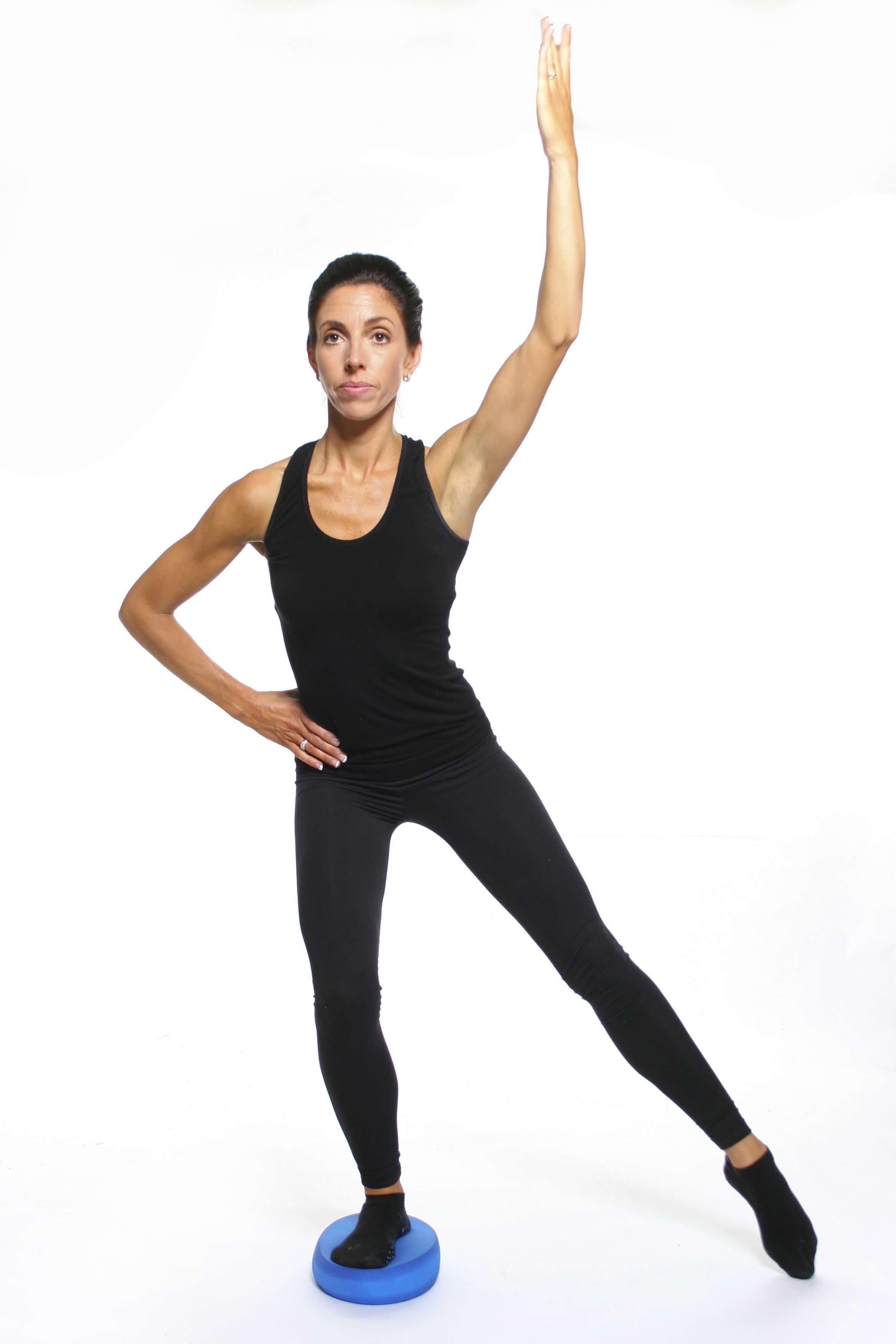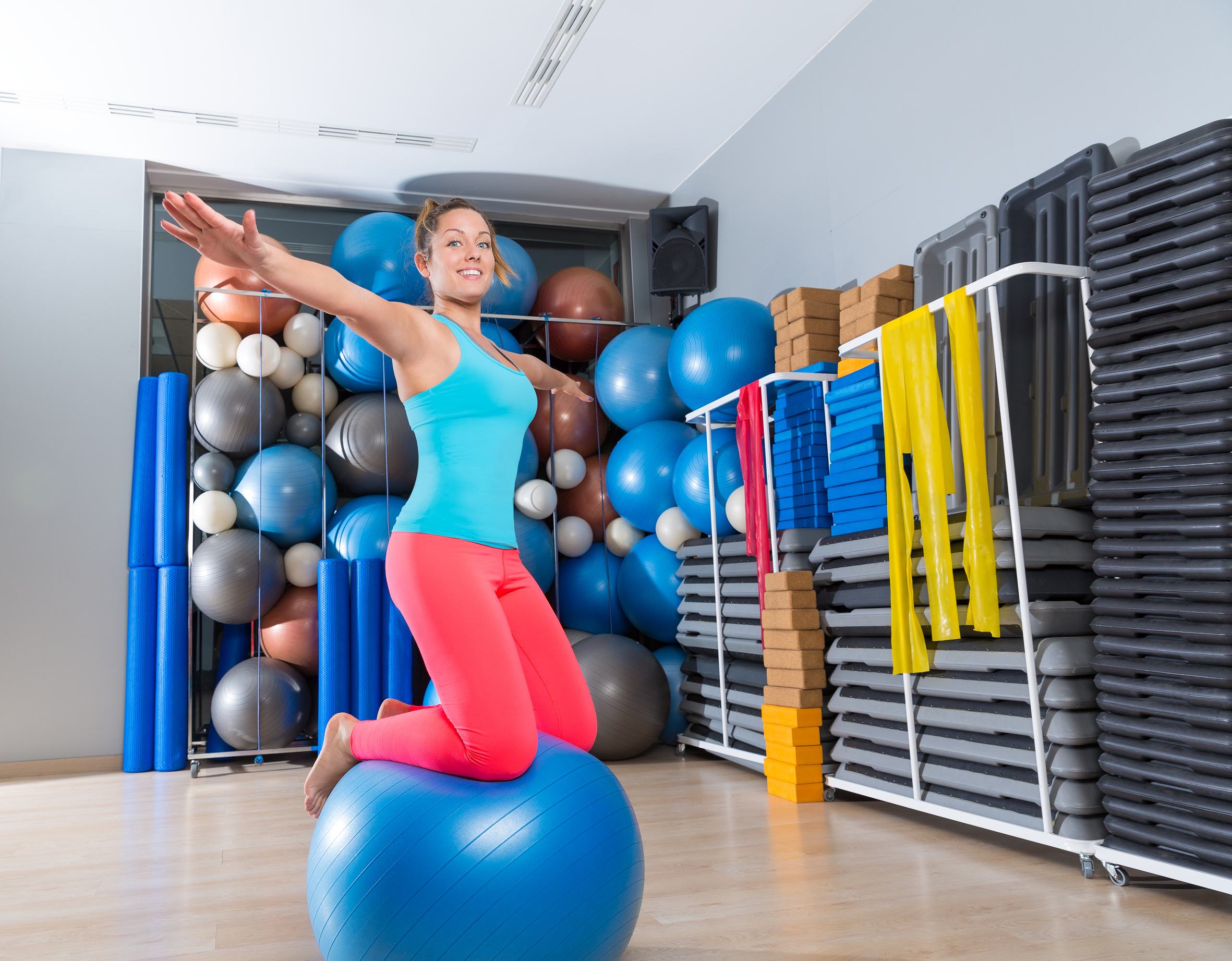The Importance of Balance in Athletics
Balance training exercises for athletes are not just an essential component of athletic performance but a cornerstone of it. Every sport requires a degree of balance that often goes unnoticed until it’s missing. From the graceful pirouettes of a ballet dancer to the powerful strides of a sprinter, balance is the invisible force that keeps athletes in control.
Balance contributes to better coordination, allowing athletes to move seamlessly and with precision. Whether it’s navigating a tricky soccer field or maintaining form during a high-speed ice hockey match, balance is the key to movement efficiency.
Furthermore, stability, a direct offshoot of balance, is a critical aspect of every athletic endeavor. It provides the foundation for athletes to generate power and speed without losing their footing. In sports like gymnastics and martial arts, balance and stability are prerequisites for success.

Injury prevention is another significant benefit of balance training exercises for athletes. By improving proprioception, athletes can respond to sudden shifts in movement, reducing the risk of injuries. For instance, trail runners can adjust their stride instantaneously to avoid tripping over a rock or root, thanks to their excellent balance.
Renowned athletes owe their success to balance training. Consider the case of legendary gymnast, Simone Biles. Her extraordinary balance allows her to execute complex routines with ease, making her one of the most decorated athletes in the history of gymnastics.
However, despite its importance, balance training is often overlooked in favor of strength and endurance training. The future of athletic training should see a shift in this perspective, with balanced training exercises gaining the recognition they deserve. This shift could lead to athletes reaching new heights in their performance, setting records and rewriting the annals of sports history.
In conclusion, balance is not just a crucial component of athletic performance but the backbone of it. Incorporating balance training exercises into an athlete’s regimen can lead to improved coordination, stability, and injury prevention, unlocking their full athletic potential.
Understanding Balance Training
Balance training, while often overlooked, is a vital aspect of any athlete’s workout regimen. It refers to exercises that enhance an athlete’s ability to maintain body equilibrium. Balance training exercises for athletes aim to improve proprioception, which is the body’s ability to sense its location, movements, and actions.
Balance training is not merely about standing on one leg or walking on a balance beam. It involves a variety of exercises designed to challenge the body’s balance limits and stability. The goals of balance training extend beyond merely avoiding falls. It aims to improve an athlete’s overall performance by enhancing coordination, agility, reaction times, and muscle strength.
Integrating balance training into an athlete’s workout regimen can be a game-changer. It can be as simple as incorporating balance exercises at the end of a routine or dedicating specific days to balance-focused workouts. Factors like intensity, variety, and progression play crucial roles in this integration. It is essential to gradually increase the difficulty level of balance exercises to challenge the body continuously.
Understanding the science behind balance is also pivotal. Balance is governed by a complex interplay of three sensory systems – the visual system, the vestibular system (inner ear), and the proprioceptive system (sensory receptors). These systems work in harmony to transmit information to the brain, which then coordinates the necessary muscular actions to maintain balance.
But how does one measure balance? Advances in technology have led to the development of innovative balance testing systems that can accurately assess an athlete’s balance capabilities. These systems can provide valuable insights into an athlete’s balance proficiency, allowing coaches and trainers to tailor balance training programs more effectively.
Yet, despite its numerous benefits, balance training exercises for athletes often take a backseat to more traditional forms of training. This oversight could be due to a lack of understanding or underestimation of the role balance plays in athletic performance. It is crucial that future athletic training paradigms place equal emphasis on balance training to foster well-rounded athletes.
In summary, understanding balance training – its goals, implementation, and the science behind it – can open new avenues for athletic performance enhancement. It’s high time that balance training exercises for athletes receive the recognition they deserve and become a staple in athletic training.
How to Incorporate Balance Training into Your Routine
Integrating balance training exercises into an athlete’s routine can significantly enhance performance. However, it’s not just about adding a few balance exercises to the workout. It requires a strategic approach that considers factors like frequency, intensity, and progression.
Firstly, frequency is a crucial aspect. Balance training exercises for athletes should be a regular part of their workout regimen. It could be as simple as dedicating a few minutes at the end of each workout to balance exercises or setting aside specific days for balance-focused training.
Intensity is another important factor. Balance exercises should be challenging enough to push the athlete’s balance limits. However, it’s essential to ensure that the intensity is appropriate for the athlete’s current balance capabilities to prevent injuries.

Progression is the third key factor. Over time, the body adapts to balance exercises, reducing their effectiveness. To counter this, athletes should gradually increase the difficulty of their balance exercises. This progression can be achieved by adding more complex movements, increasing the duration, or using balance training equipment.
While incorporating balance training exercises for athletes, it’s also important to consider the specific demands of their sport. For instance, a gymnast might benefit more from exercises that challenge dynamic balance, while a weightlifter might need exercises that improve static balance.
Moreover, balance training should not be an isolated component of an athlete’s workout regimen. Instead, it should be integrated with other forms of training such as strength, endurance, and flexibility training. This integrated approach can lead to better overall athletic performance.
However, despite the clear benefits of balance training, it’s often neglected in many athletic training programs. This could be due to a lack of awareness about the importance of balance or the misconception that balance is an innate skill that can’t be improved. To address this, future athletic training programs should place greater emphasis on balance training and provide clear guidelines on how to incorporate it into workout routines.
In conclusion, incorporating balance training exercises into an athlete’s routine can significantly enhance athletic performance. However, it requires a strategic approach that considers factors like frequency, intensity, and progression. With the right approach, balance training can unlock an athlete’s full potential and take their performance to new heights.
Top Balance Training Exercises for Athletes
Balance training exercises for athletes are diverse, each targeting different aspects of balance and stability. Here, we delve into some of the most effective exercises that can help athletes enhance their balance and, consequently, their overall performance.
1. Single-Leg Stance
The single-leg stance is a fundamental balance exercise. It involves standing on one leg while keeping the other off the ground. This exercise enhances static balance and strengthens the leg muscles. It’s a versatile exercise that can be made more challenging by closing the eyes or performing it on an unstable surface.

2. Bosu Ball Squats
Bosu ball squats are an excellent exercise for improving dynamic balance. The unstable surface of the Bosu ball challenges the body’s balance systems, enhancing proprioception and stability. This exercise also strengthens the lower body muscles, which are crucial for maintaining balance.
3. Balance Beam Walks
Balance beam walks are a classic balance exercise. They involve walking along a narrow beam while maintaining balance. This exercise challenges both static and dynamic balance and can be made more difficult by adding turns or walking backwards.
4. Stability Ball Exercises
Stability ball exercises are a versatile tool for balance training. They can be used for a variety of exercises, such as planks, squats, or push-ups, each challenging the body’s balance in different ways.
These are just a few examples of balance training exercises for athletes. Each exercise has its benefits and can be tailored to the specific needs and abilities of the athlete. However, it’s important to remember that balance training is not a one-size-fits-all approach. What works for one athlete may not work for another, highlighting the need for personalized balance training programs.
Moreover, while these exercises can significantly enhance balance, they are not a substitute for professional guidance. Athletes should seek the advice of a qualified trainer or physiotherapist to ensure they are performing these exercises correctly and safely.
Looking ahead, the future of balance training could see the integration of technology, such as virtual reality, to provide more immersive and challenging balance exercises. This could revolutionize balance training, making it more engaging and effective.
In conclusion, balance training exercises are a crucial component of an athlete’s training regimen. By incorporating these exercises into their routine, athletes can enhance their balance, improve their performance, and reduce their risk of injury.
Maximizing the Benefits of Balance Training
Maximizing the benefits of balance training goes beyond just performing exercises. It involves a holistic approach that encompasses proper form, consistency, and incorporating balance challenges into training. Additionally, the role of recovery and nutrition in improving balance cannot be overlooked.
Firstly, the importance of proper form cannot be overstated. Performing balance exercises with correct form ensures that the targeted muscles are engaged effectively, maximizing the benefits of the exercises. It also reduces the risk of injury and ensures that the intended balance challenge is achieved.
Consistency is another key factor in maximizing the benefits of balance training. Like any form of training, consistency is crucial for seeing results. Regularly incorporating balance exercises into the training regimen ensures that the body adapts and improves its balance capabilities over time.

Integrating balance challenges into training is an innovative approach that can yield significant benefits. This can involve adding elements of instability to traditional exercises, such as performing squats on a balance board or using a stability ball during weight training. These challenges force the body to engage stabilizing muscles, enhancing balance and overall athletic performance.
Recovery and nutrition play a vital role in improving balance. Adequate rest and recovery allow the body to adapt to the demands of balance training, reducing the risk of overuse injuries. Additionally, a balanced diet that provides essential nutrients and supports muscle recovery is essential for maintaining optimal balance and stability.
Looking ahead, the future of balance training could see the integration of advanced technologies, such as virtual reality or augmented reality, to create immersive and challenging balance training experiences. These innovations could revolutionize the way athletes approach balance training, making it more engaging and effective.
In conclusion, maximizing the benefits of balance training involves a multifaceted approach that includes proper form, consistency, incorporating balance challenges into training, and prioritizing recovery and nutrition. By embracing this holistic approach, athletes can unlock their full athletic potential and elevate their performance to new heights.

